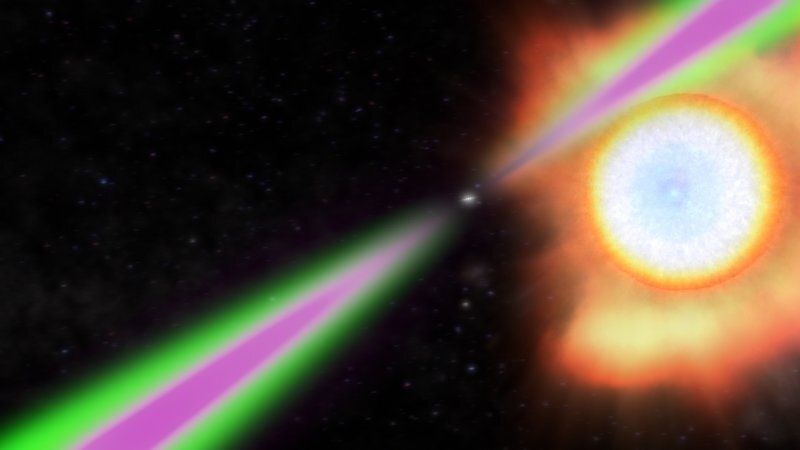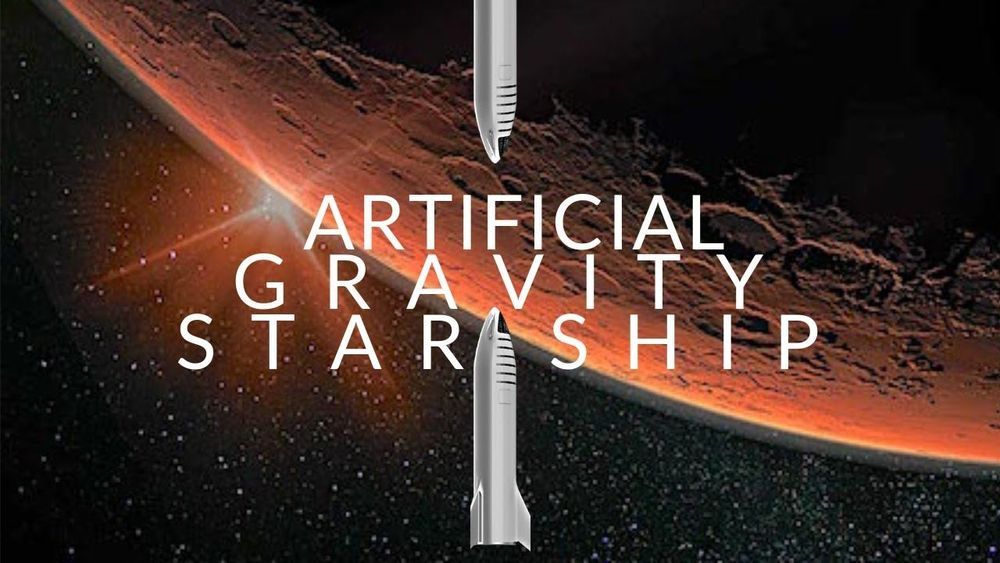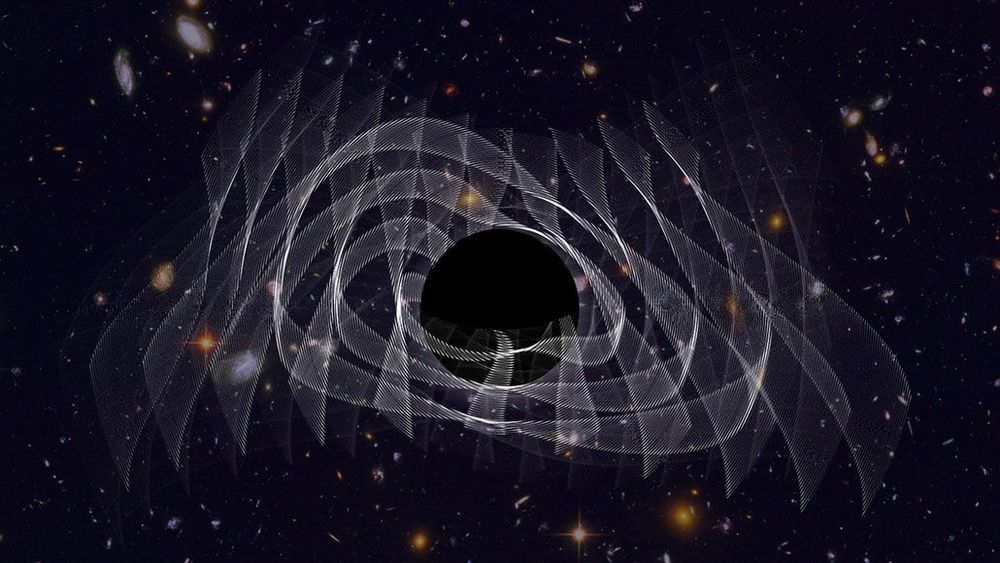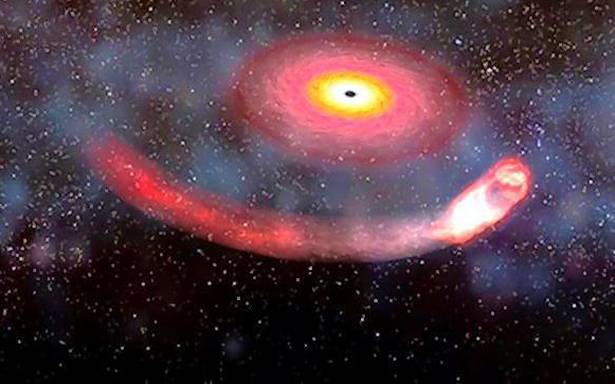Bots built by artificial intelligence lab OpenAI worked together to find solutions to problems that humans hadn’t thought of.



An international research team led by the Max Planck Institute for Gravitational Physics (Albert Einstein Institute; AEI) in Hannover has discovered that the radio pulsar J0952-0607 also emits pulsed gamma radiation. J0952-0607 spins 707 times in one second and is second in the list of rapidly rotating neutron stars. By analyzing about 8.5 years worth of data from NASA’s Fermi Gamma-ray Space Telescope, LOFAR radio observations from the past two years, observations from two large optical telescopes, and gravitational-wave data from the LIGO detectors, the team used a multi-messenger approach to study the binary system of the pulsar and its lightweight companion in detail. Their study published in the Astrophysical Journal shows that extreme pulsar systems are hiding in the Fermi catalogs and motivates further searches. Despite being very extensive, the analysis also raises new unanswered questions about this system.
Pulsars are the compact remnants of stellar explosions which have strong magnetic fields and are rapidly rotating. They emit radiation like a cosmic lighthouse and can be observable as radio pulsars and/or gamma-ray pulsars depending on their orientation towards Earth.

Astronomers have detected the most massive neutron star ever, and it almost shouldn’t even exist.
Neutron stars are the smallest in the universe, with a diameter comparable to the size of a city like Chicago or Atlanta. They are the leftover remnants of supernovae. But they are incredibly dense, with masses bigger than that of our sun. So think of the sun, compressed into a major city.
In the case of the newly detected neutron star, dubbed J0740+6620, it’s 333,000 times the mass of the Earth and 2.17 times the mass of the sun. But the star is only about 15 miles across. It’s 4,600 light-years from Earth.


Humanist and technoscientific notions of progress have been (mis)used to classify human and nonhuman life forms into hierarchical categories, thereby reducing the complexities of life stories into a linear account of development and innovation. At the same time, critical reflections on key concepts of modernist, Eurocentric and industry-driven concepts of time and historicity and, more forcefully perhaps, new findings in evolutionary biology and physics, have produced alternative narratives, sometimes with a reconsideration of premodern understandings of temporality like, for example, Gilles Deleuze ’s rereading of Leibniz in The Fold.[1] The modernist conception of History (with a capital H) as both an empirical reality and a specific disciplinary and disciplining knowledge [2] has thus become just one possible manifestation within a plurality of histor ies conditioned by socio-cultural particularities that honour the experience of bodies that, voluntarily or not, live outside re/productive timelines, for example.
An increasing number of researchers as well as artists are no longer interested in the taking and making time and space as human universals but in genealogies, intersections, “multiple modernities”[3] and the coexistence of non-simultaneous phenomena in the era of globalization, asymmetrical power relations and technoculture. Moreover, post-anthropocentric thinking and creativity, fostered in posthumanist discourse (including new materialism, speculative realism, object-oriented ontology, neocybernetic systems theory, etc.), also increasingly attends to nonhuman temporalities and how these are entangled, often in conflicting ways, with human time. Such considerations include the vexing question of how emancipatory goals of progressive social trans/formation and justice can be envisaged, let alone obtained, if we can no longer ground our theories and political practices in enlightened narratives of humanist progress and liberation.

Despite the many, many problems we face in the world today, it is still an exciting time to be alive! As we speak, mission planners and engineers are developing the concepts that will soon take astronauts on voyages beyond Low Earth Orbit (LEO) for the first time in almost fifty years. In addition to returning to the Moon, we are also looking further afield to Mars and other distant places in the Solar System.
This presents a number of challenges, not the least of which are the effects of prolonged exposure to radiation and microgravity. And whereas there are many viable options for protecting crews from radiation, gravity remains a bit of a stumbling block. To address this, Youtuber smallstars has proposed a concept that he calls the Gravity Link Starship (GLS), a variation of SpaceX’s Starship that will be able to provide its own artificial gravity.
The idea was inspired in part by science fiction. Depending on how realistic a franchise is trying to be, starships will either generate their own gravity using some special device or through rotating sections. While the former concept is much like the hyperdrive (i.e. uses physics that are either totally fictitious or theoretical at this point), the latter is something that is entirely feasible.



Researchers have, for the first time, detected the gravitational waves from a newly born black hole, and found that the ringing pattern of the waves predicts the cosmic body’s mass and spin, providing more evidence for Einstein’s General Theory of Relativity.
The study, published in the journal Physical Review Letters, increases the possibility that black holes exhibit only three observable properties – mass, spin, and electric charge.
All other properties, the study noted, could be swallowed up by the black hole itself, and are unobservable.

Circa 2013 o.o
Physicists have been able to stop something that has the greatest possible speed and that never really stops: light. A decade ago, physicists stopped it very for a short moment. In recent years, this extended towards stop times of a few seconds for simple light pulses in extremely cold gases and special crystals. But now the same researchers extended the possible duration and applications for freezing the motion of light considerably. The physicists stopped light for about one minute. They were also able to save images that were transferred by the light pulse into the crystal for a minute — a million times longer than previously possible.
Close.